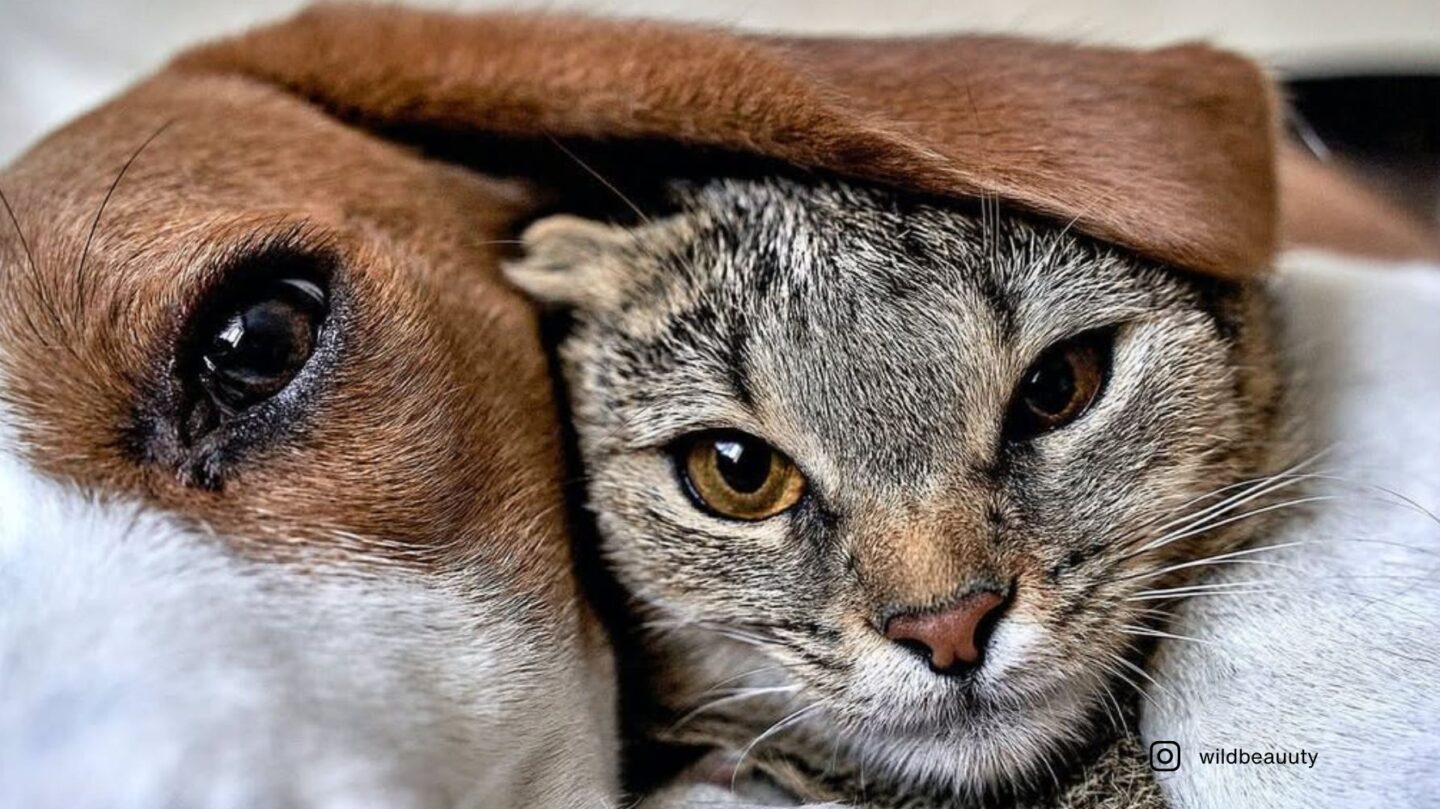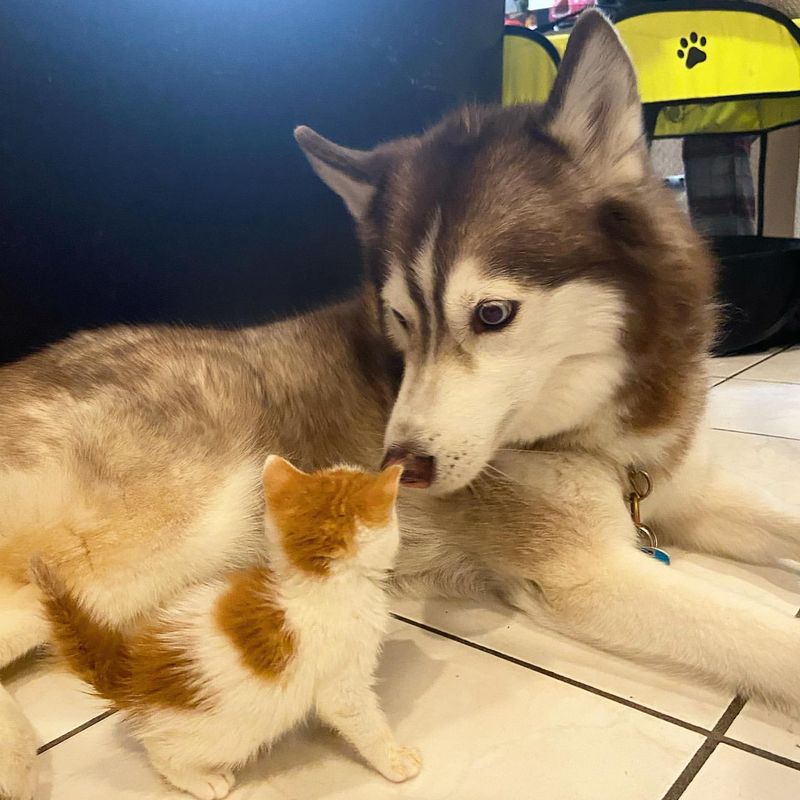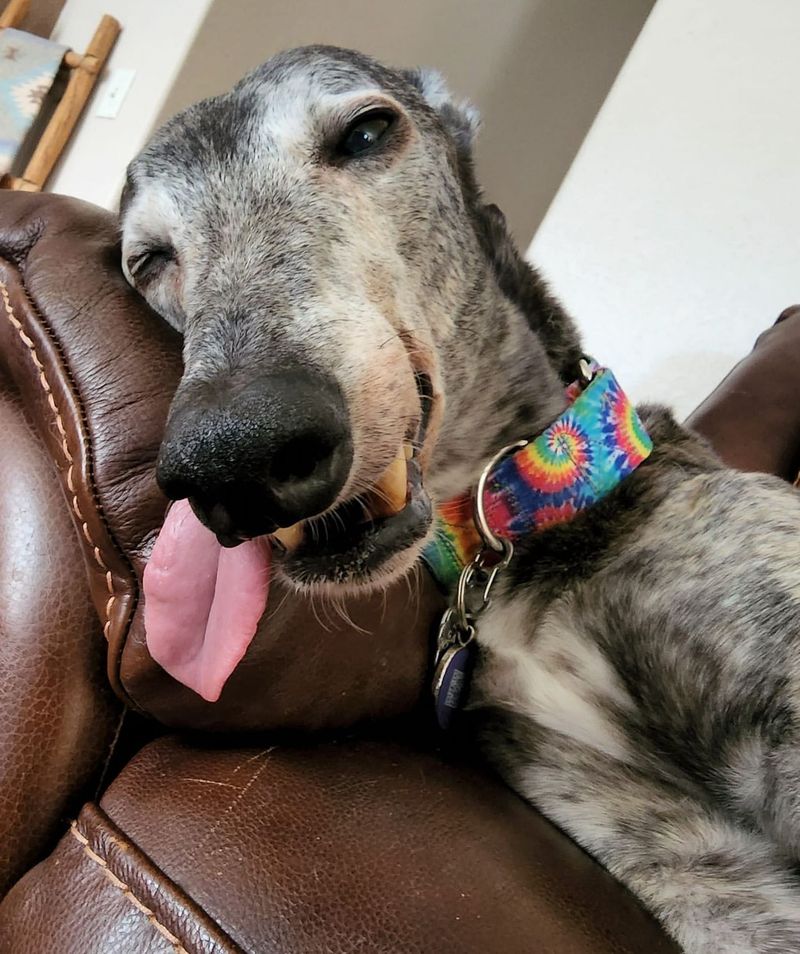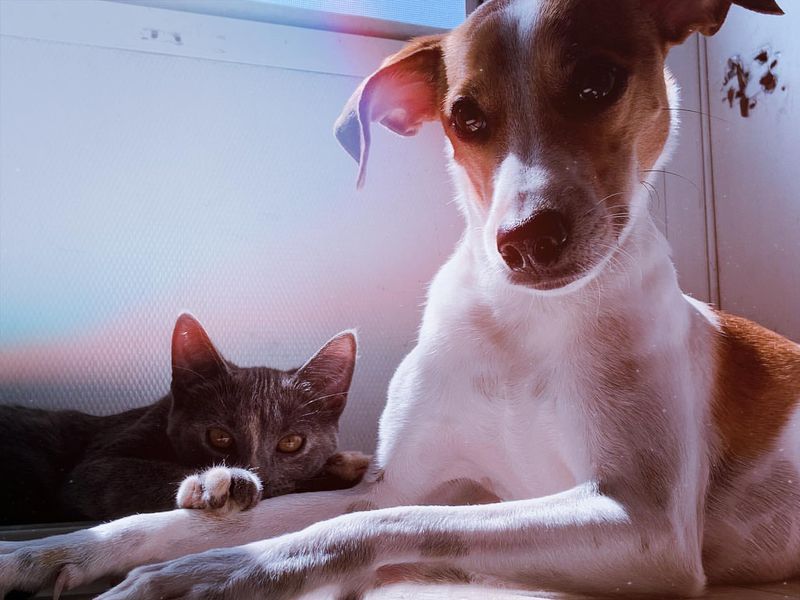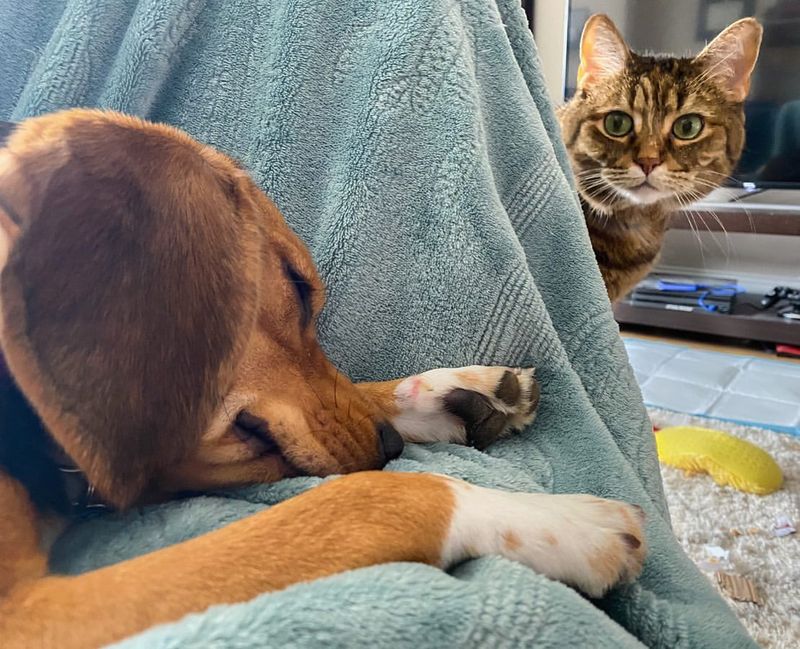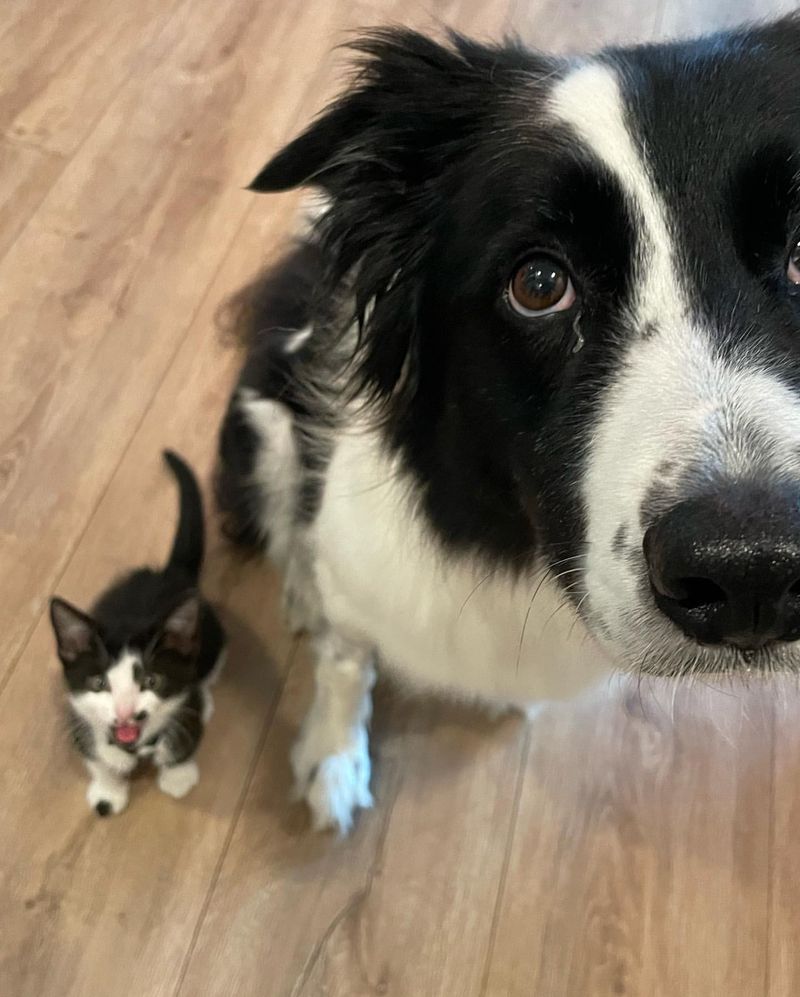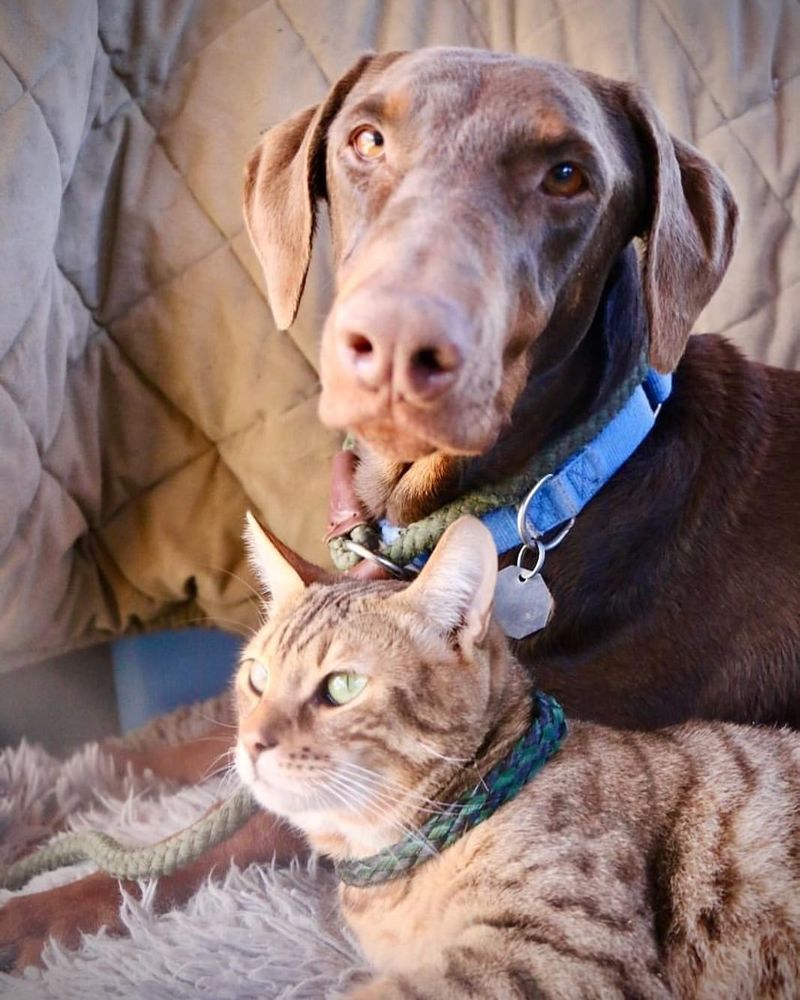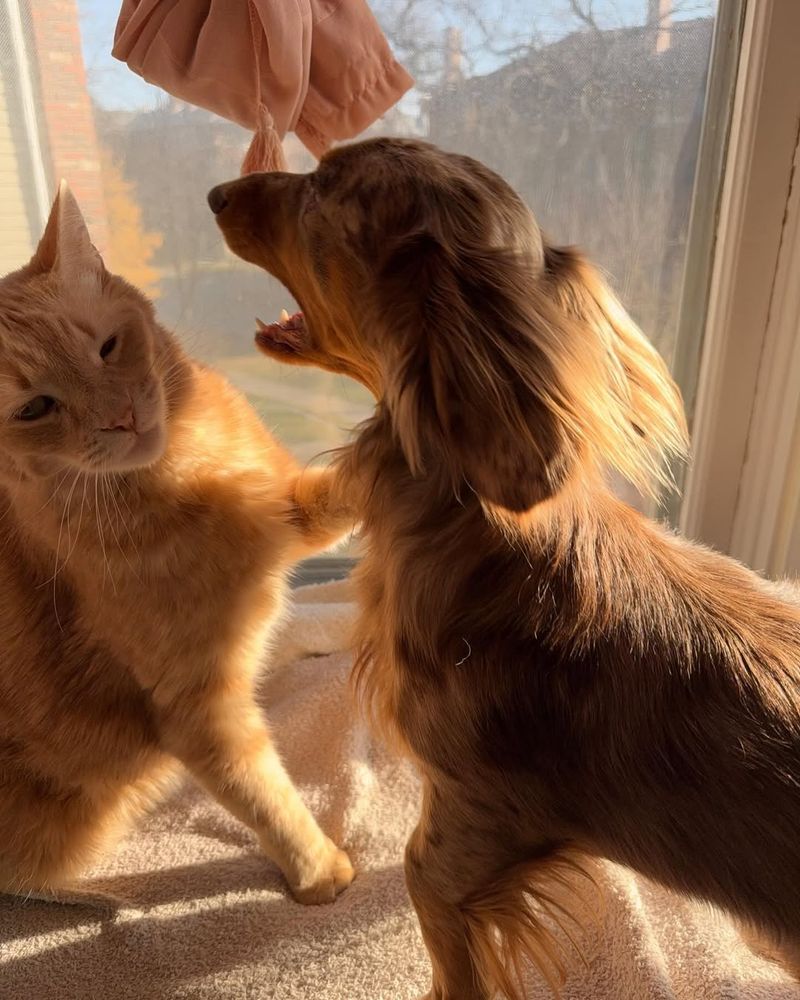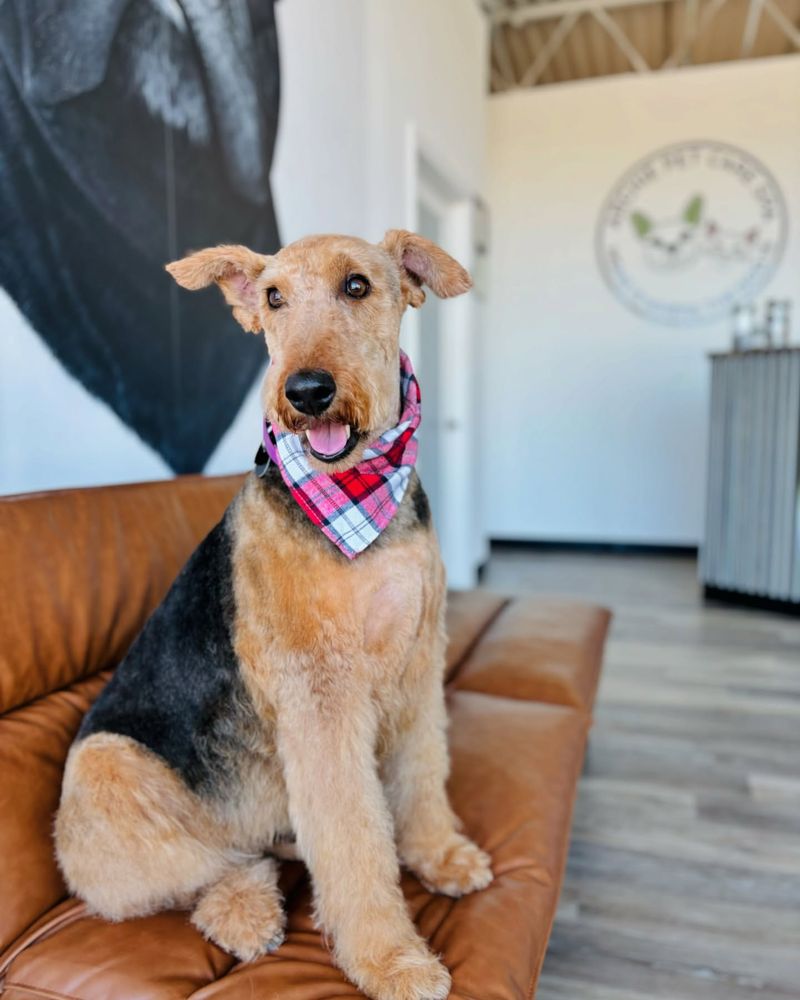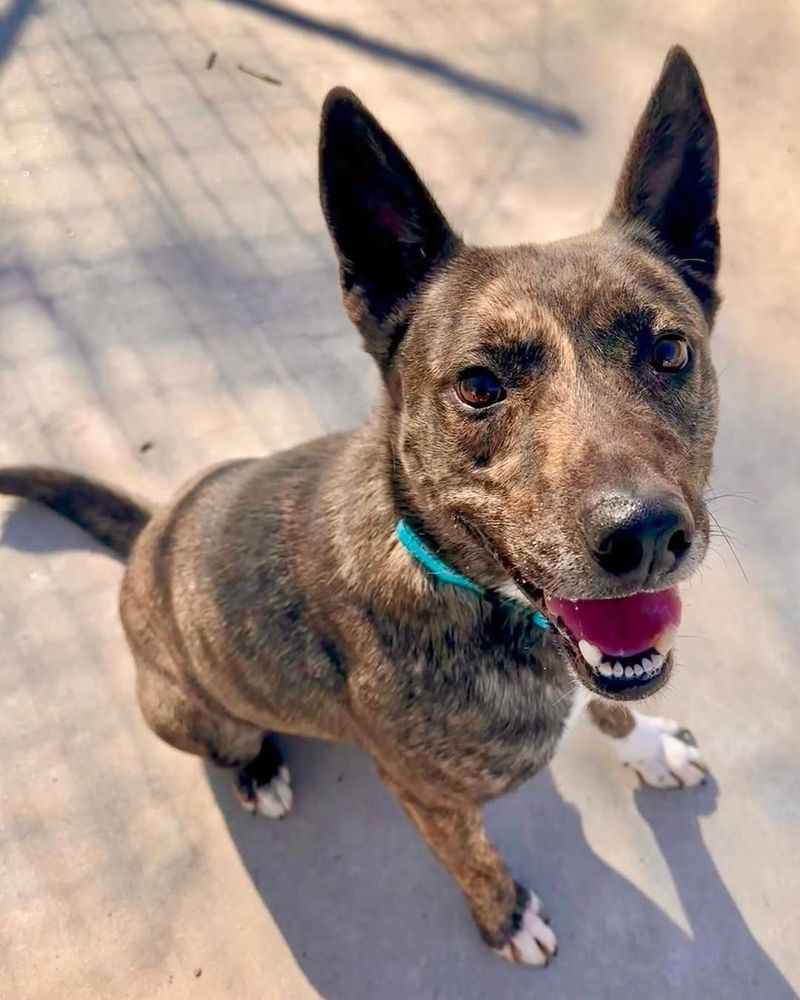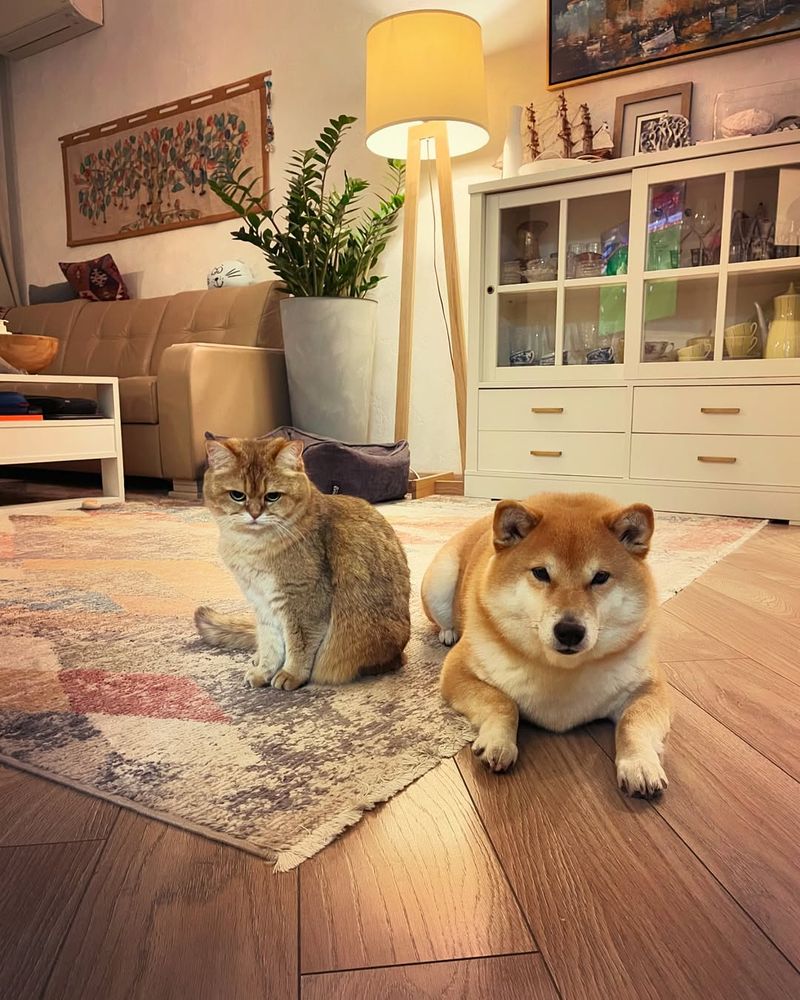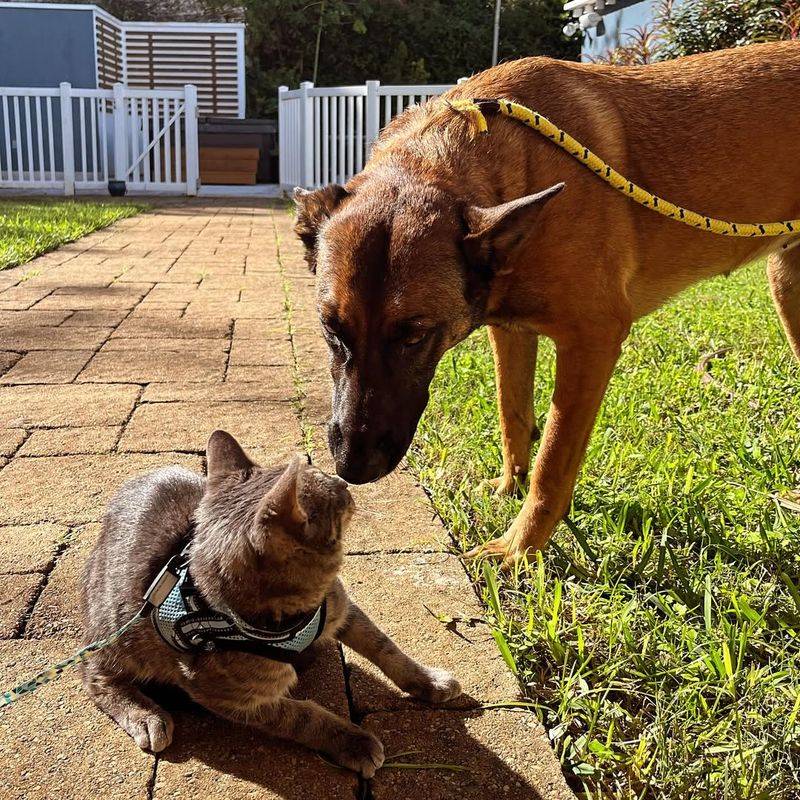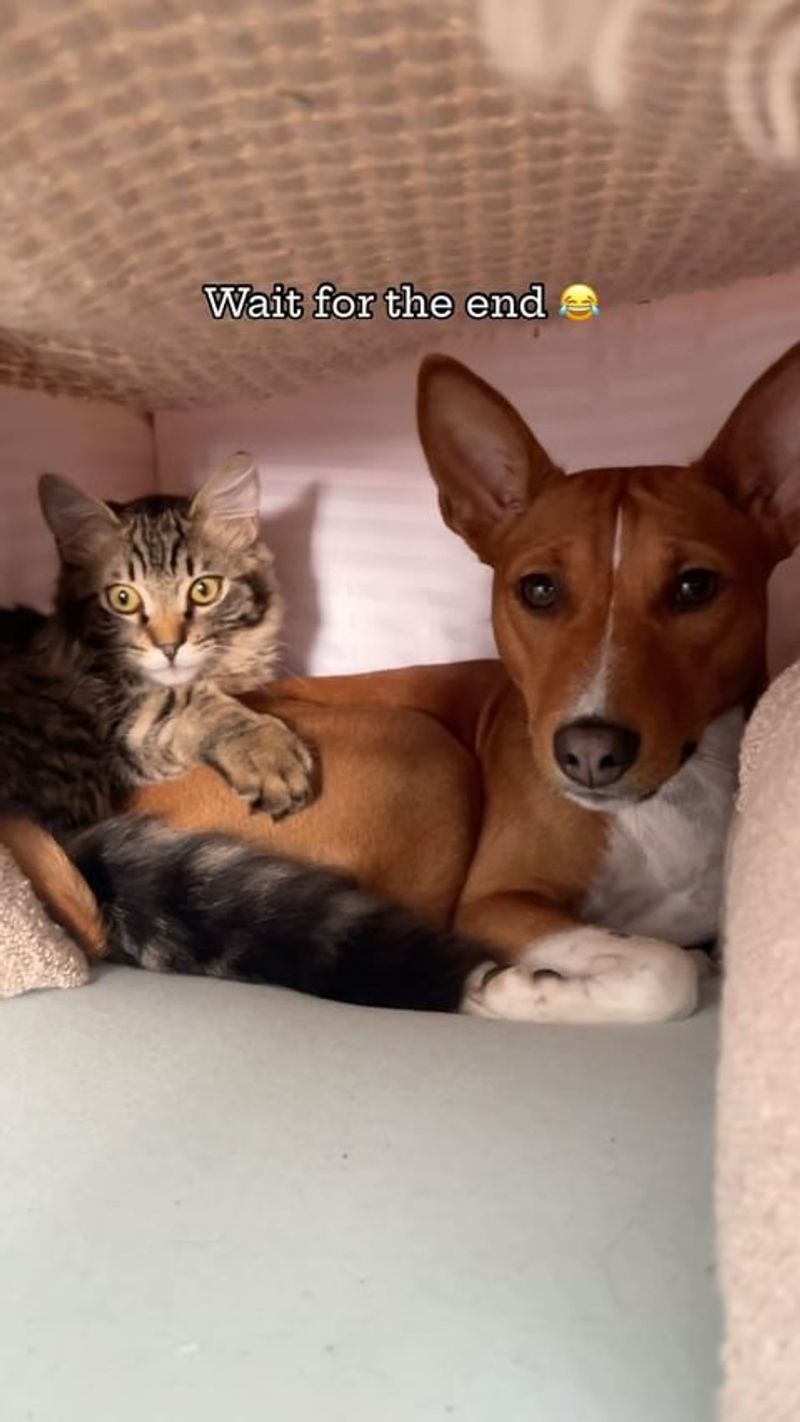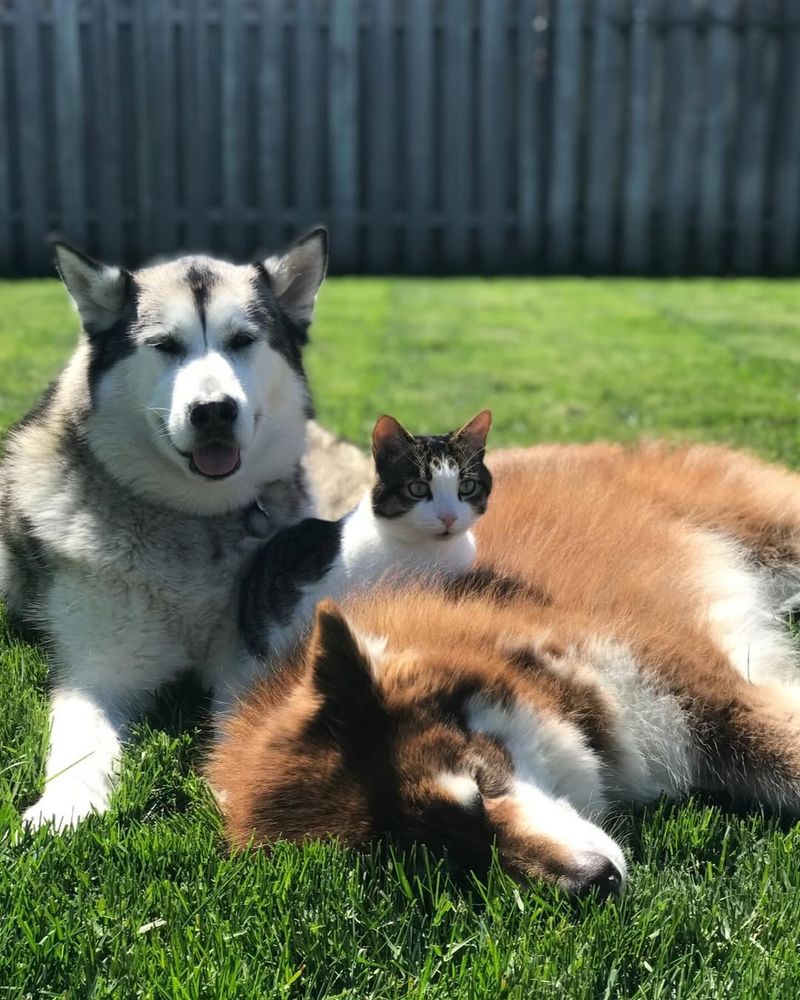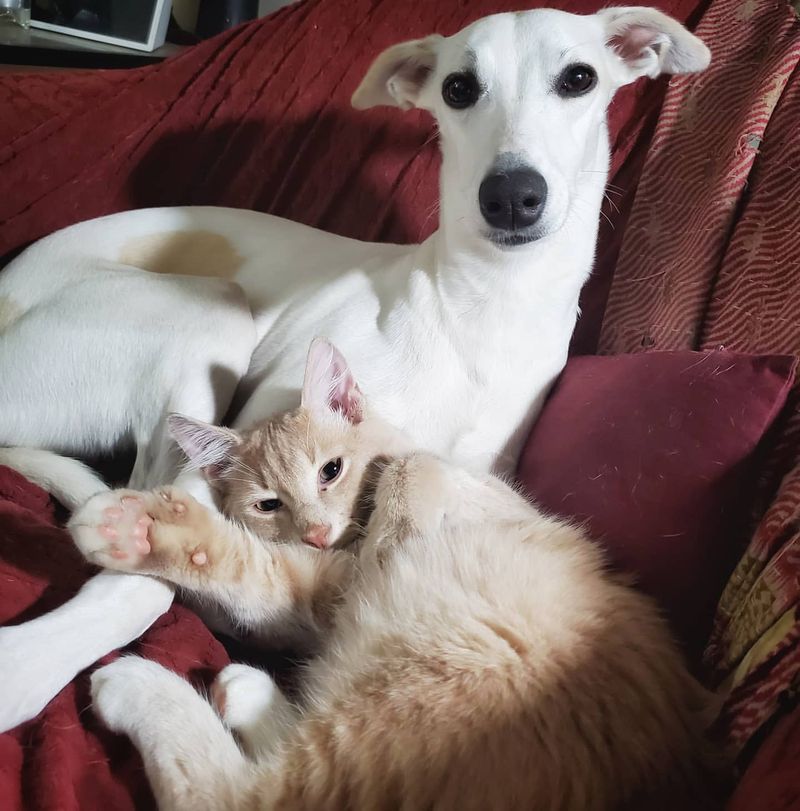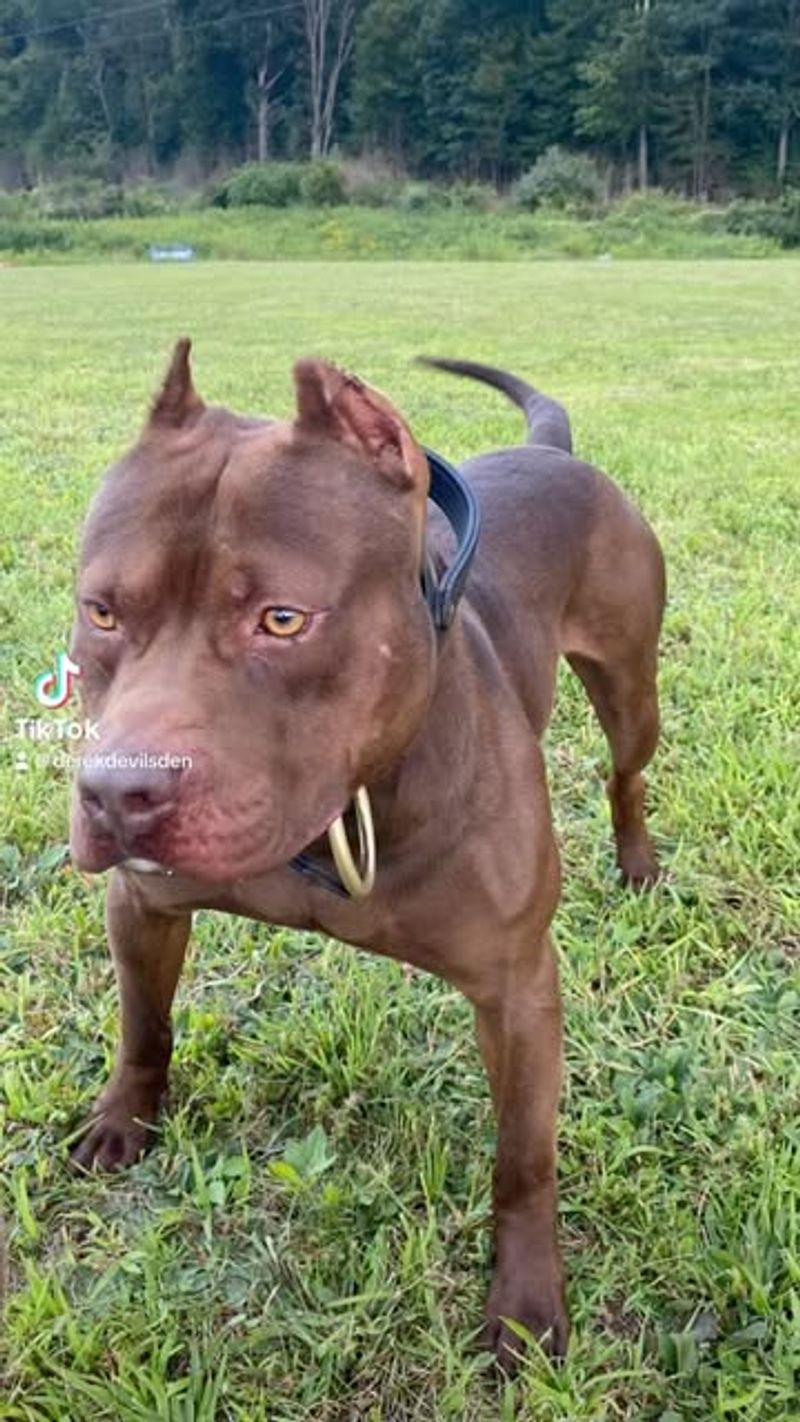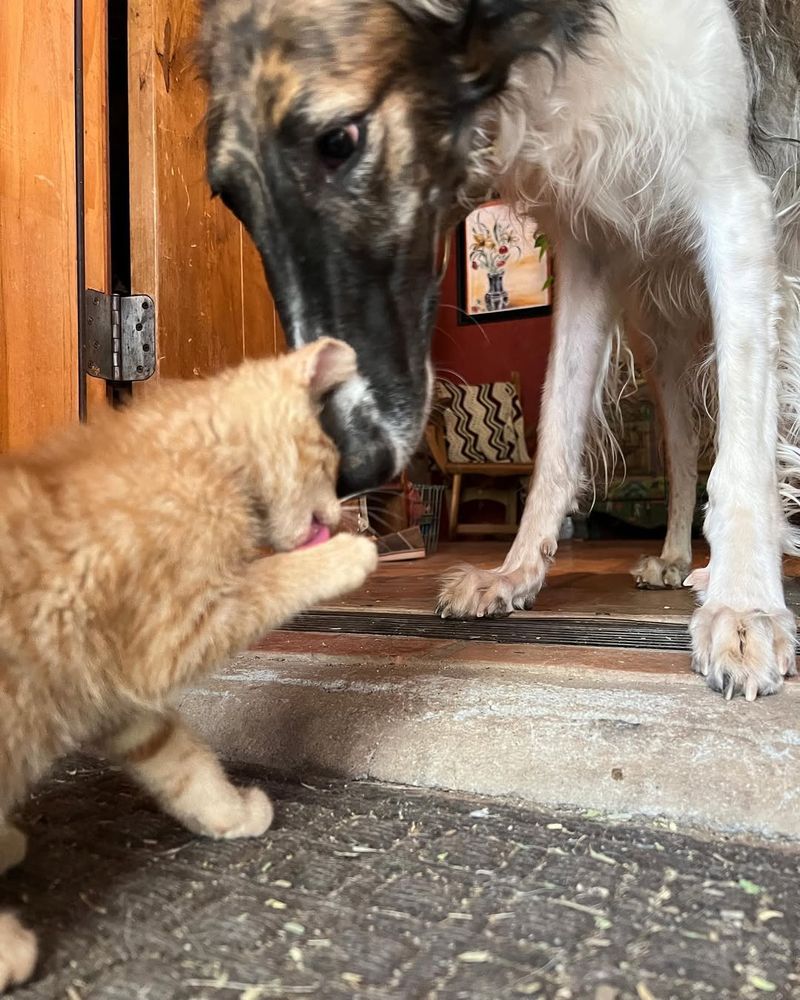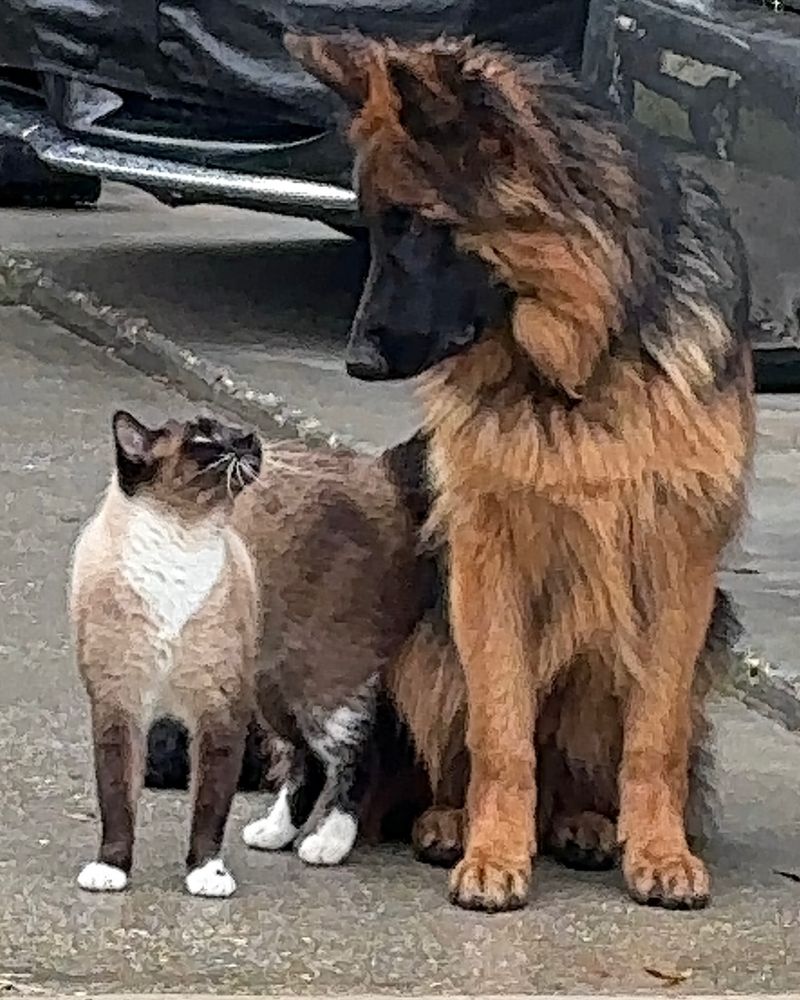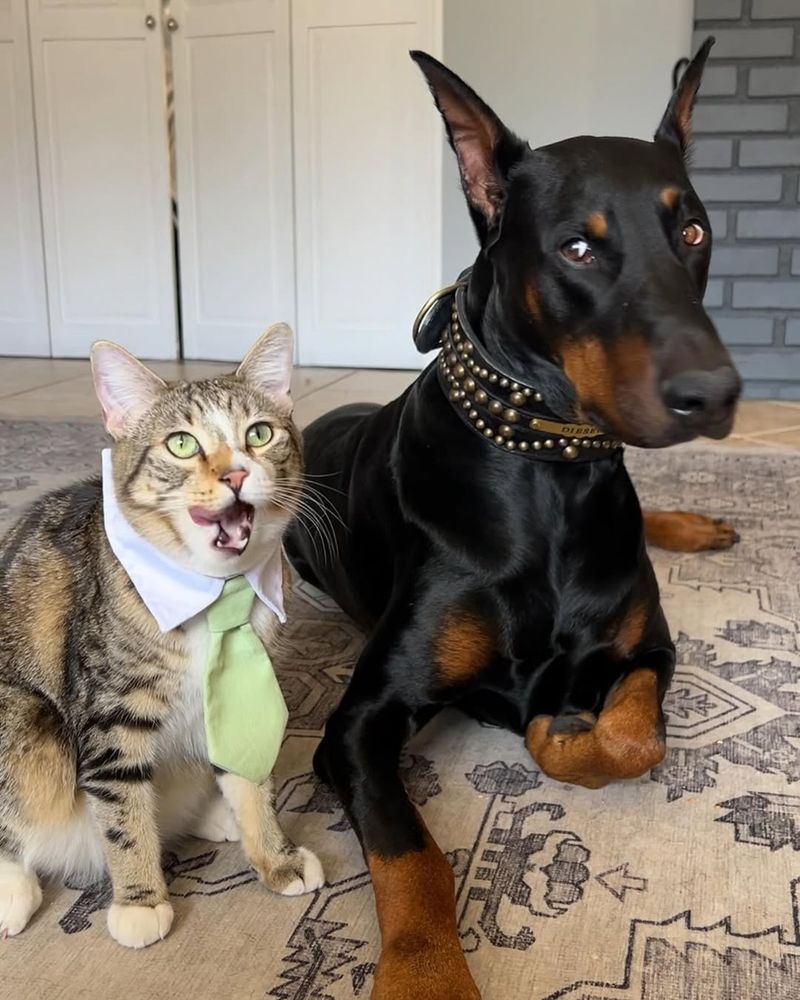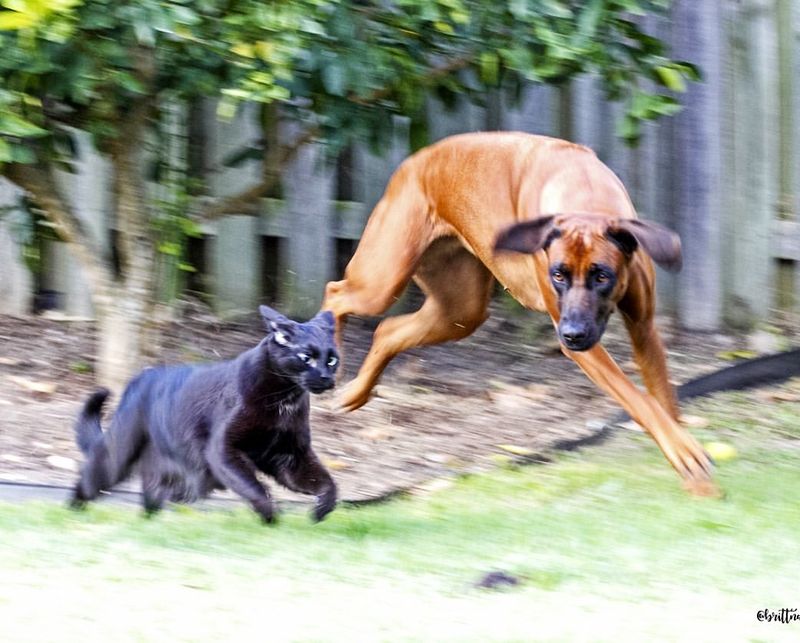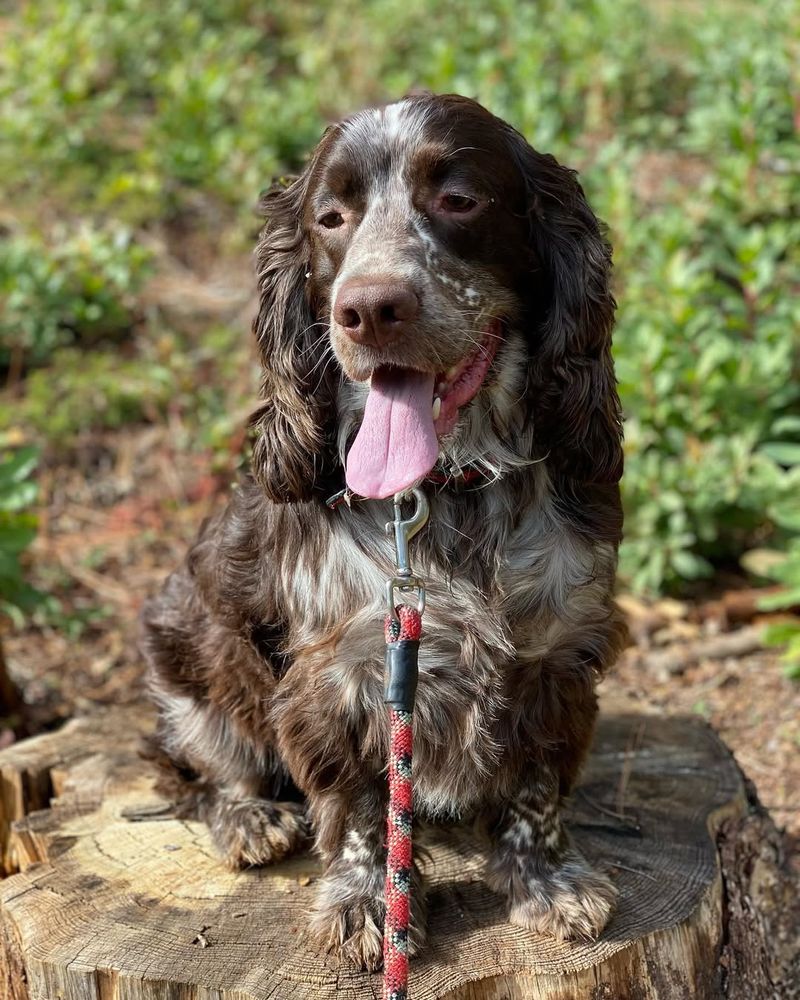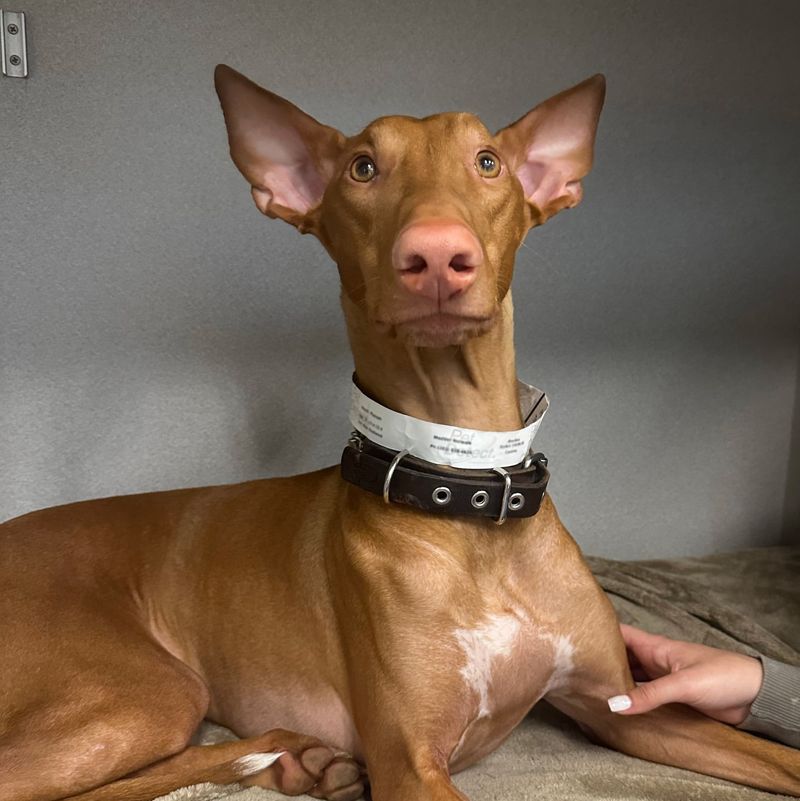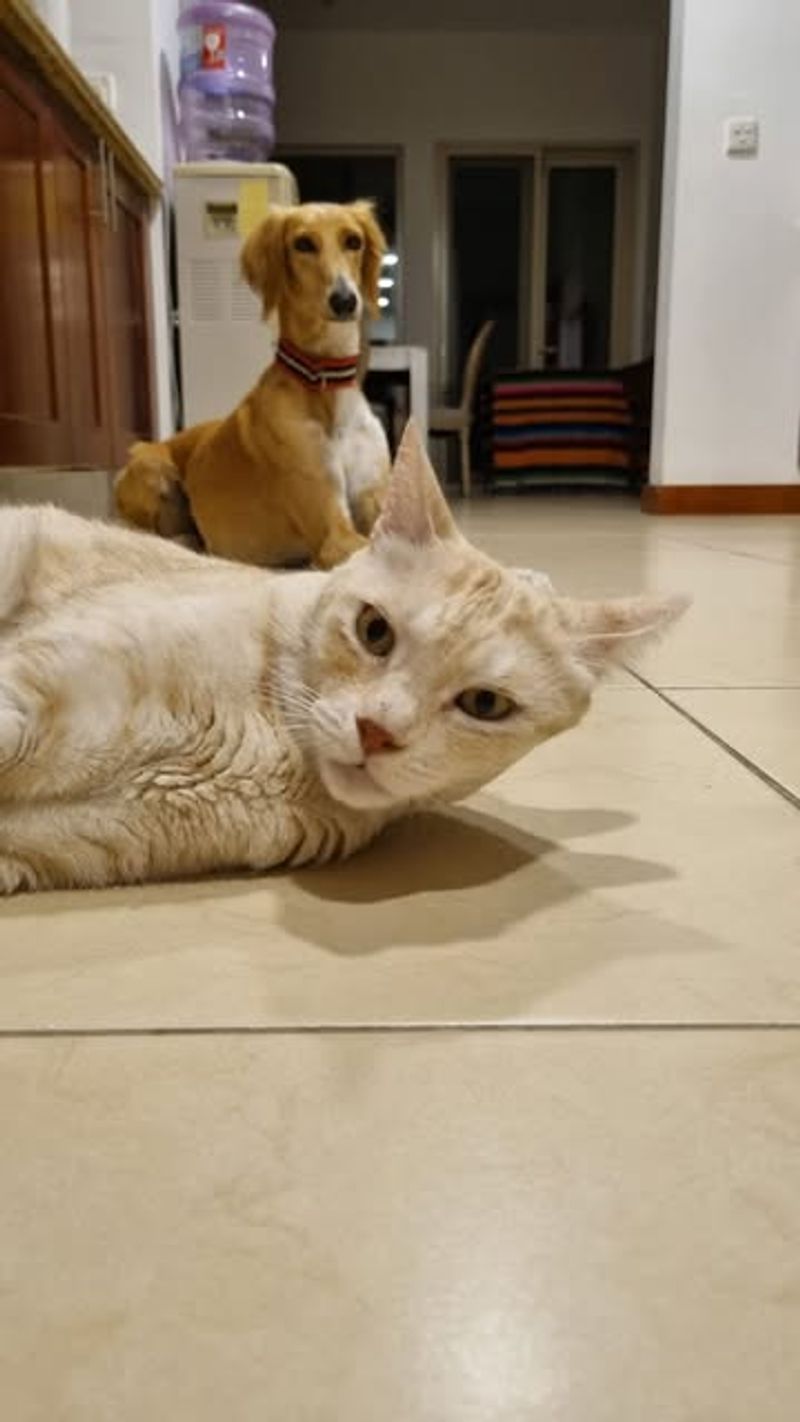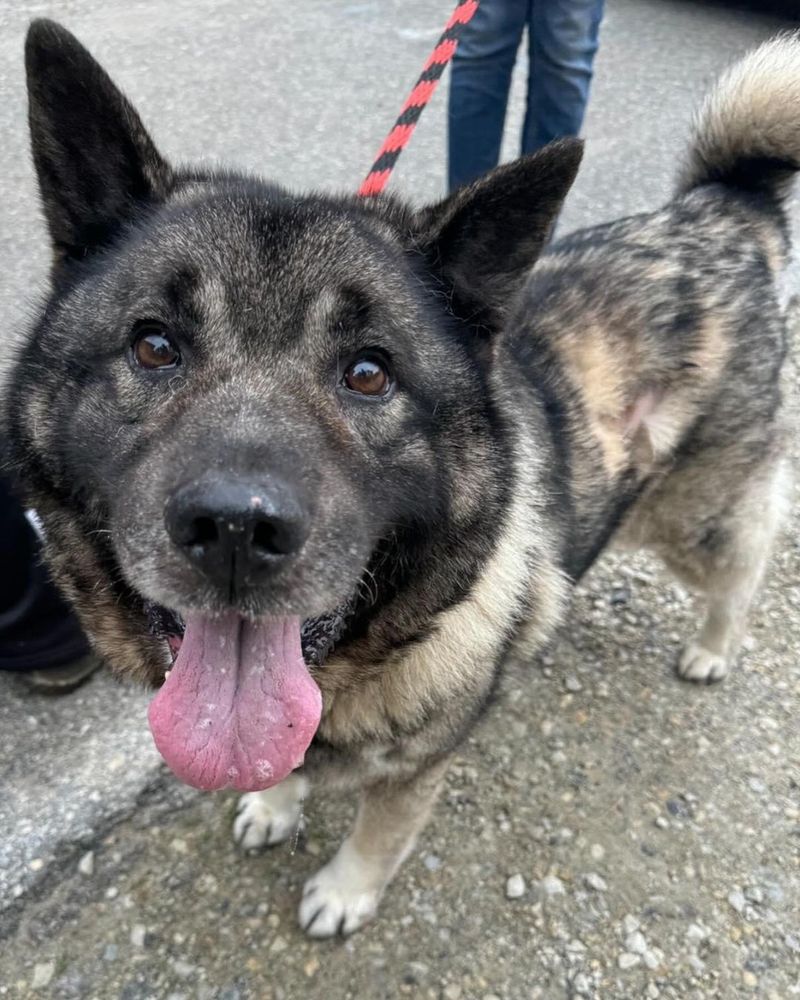Some dog breeds have an inherent strong prey drive, making it challenging for them to coexist with cats. These breeds are often driven by instinct to chase smaller animals, including cats. This blog explores 25 such dog breeds, elaborating on the reasons behind their strong prey drives and their difficulties in living peacefully with feline companions. By understanding these breeds better, pet owners can make informed decisions about introducing a cat or a dog into their homes.
Siberian Husky
Siberian Huskies are known for their striking appearance and energetic nature. These dogs were originally bred for sled pulling in harsh Arctic conditions, which required a strong, independent spirit and a high prey drive. Huskies are naturally inclined to chase anything that moves quickly, including cats. Their instinctual desire to run and chase can make living with smaller animals challenging. Huskies need ample exercise and mental stimulation to keep their instincts in check. Owners should ensure secure environments to prevent Huskies from giving in to their chase instincts.
Greyhound
Greyhounds are built for speed, with their lean bodies and long legs. Originally bred for hunting game, their natural instinct is to chase anything that moves. Greyhounds have a very high prey drive and can be unpredictable around smaller animals like cats. While they are gentle with humans, their hunting background can make cohabitation with cats quite risky. To mitigate issues, Greyhounds require training and socialization. Providing them with controlled environments can help manage their instincts better.
Jack Russell Terrier
Jack Russell Terriers are small but mighty dogs with an incredible amount of energy and a strong prey drive. These terriers were bred to hunt foxes, and their instinct to dig, chase, and capture is still very much alive. This can be problematic for households with cats, as a Jack Russell’s curiosity and determination might lead to unwanted chasing. To harmonize living with a cat, it’s crucial to provide this breed with plenty of exercises and mental challenges, curbing their natural instincts to chase smaller creatures.
Beagle
Beagles are beloved for their friendly and curious nature but harbor a strong prey drive. Historically used for hunting small game like rabbits, Beagles have an innate urge to follow their noses and track animals. This can create tension in a home with cats, as Beagles may see them as game to chase. To balance their instincts, Beagles need regular exercise and scent-based games to keep them entertained. Training and socialization from an early age can also help manage their chasing tendencies.
Border Collie
Border Collies are renowned for their intelligence and herding abilities. Bred to work with livestock, they possess a strong instinct to herd anything that moves, including cats. This herding behavior can be mistaken as aggression, causing stress in multi-pet households. Border Collies require ample mental and physical stimulation to channel their energy positively. With proper training and activities like agility courses, they can learn to coexist peacefully with cats, though supervision is always recommended.
Weimaraner
Weimaraners are sleek, intelligent dogs with a strong hunting background. Originally bred for hunting large game, they have a high prey drive that can be problematic for households with cats. Their instinct to chase and capture can be overwhelming without proper training. Weimaraners thrive on exercise and need consistent, structured activities to keep them engaged. Early socialization and training are key to helping Weimaraners manage their instincts and potentially live alongside cats, though caution is always advised.
Dachshund
Dachshunds, with their distinct long bodies and short legs, were bred to hunt burrowing animals like badgers. Their strong prey drive and tenacious nature can make living with cats challenging. Dachshunds might see cats as something to pursue, driven by their instinct to hunt. To mitigate this, they require consistent training and plenty of playtime to satisfy their hunting urges. Creating a harmonious environment with cats involves teaching Dachshunds boundaries and ensuring they have outlets for their energy.
Airedale Terrier
Airedale Terriers are the largest of the terrier breeds, known for their intelligence and strong prey drive. They were originally bred to hunt otters and other small game, which translates to a high chasing instinct. This can pose challenges in a household with cats, as Airedales might attempt to chase or play too roughly. To coexist peacefully with cats, Airedales need training and mental stimulation. Engaging in activities like obedience training and agility can help manage their instincts.
Australian Cattle Dog
Australian Cattle Dogs are tenacious herders with a strong prey drive. Bred to control cattle, they have a compelling instinct to chase and herd, which can extend to cats. This natural behavior might be stressful for feline companions. For peaceful coexistence, Australian Cattle Dogs need structured environments and tasks that utilize their herding skills. Training and socialization from a young age are essential to channel their energy and instincts appropriately, fostering a more harmonious home life with cats.
Shiba Inu
Shiba Inus are spirited dogs with a strong independent streak and a notable prey drive. Originally bred for hunting small game in Japan, they are naturally inclined to chase anything that piques their interest, including cats. Shiba Inus can be quite aloof and require consistent training to curb their hunting instincts. Providing them with exercise and mental challenges helps satisfy their natural tendencies. To thrive alongside cats, Shiba Inus need a structured environment where their boundaries are clearly defined.
Belgian Malinois
Belgian Malinois are highly intelligent and driven, often employed in police and military roles. Their high energy levels and strong prey drive can make them challenging companions for cats. Originally bred for herding and protection, Malinois have a strong instinct to pursue and capture. To coexist harmoniously with cats, they require rigorous training and mental stimulation. Engaging them in activities that channel their energy positively, such as obedience training, ensures their instincts are guided in the right direction.
Basenji
Basenjis are unique dogs known for their barkless nature and high prey drive. Originally used for hunting in Africa, they are agile and quick, with a keen instinct to chase. This makes living with cats challenging, as Basenjis might view them as prey. To facilitate peaceful coexistence, Basenjis need plenty of exercise and mental activities to keep their instincts in check. Training and early socialization are crucial to helping them understand boundaries and live alongside feline companions.
Alaskan Malamute
Alaskan Malamutes are powerful dogs with a strong pack mentality and prey drive. Originally bred for pulling sleds in harsh Arctic climates, they have a natural inclination to chase smaller animals. This instinct can make living with cats difficult. Malamutes require consistent training and exercise to manage their energy and instincts. Providing them with structured activities and socialization helps mitigate their chasing tendencies, promoting a more harmonious environment for all household pets.
Whippet
Whippets are known for their incredible speed and strong prey drive, traits inherited from their racing and hunting lineage. Their instinct to chase is overwhelming, particularly when it comes to smaller animals like cats. Whippets require environments where their hunting instincts can be controlled and managed. Providing them with plenty of exercise and training helps satisfy their need for speed and chase. With proper guidance, they can learn to live peacefully with cats, although supervision is always necessary.
Fox Terrier
Fox Terriers are lively and energetic, with a history of hunting foxes and vermin. This background gives them a strong prey drive, often leading to a natural instinct to chase smaller animals, including cats. To help Fox Terriers live harmoniously with cats, they require consistent training and mental stimulation. Activities like agility training and interactive toys can help channel their energy positively. Establishing boundaries and providing plenty of exercises helps manage their instinctual behaviors.
American Pit Bull Terrier
American Pit Bull Terriers are strong dogs with a high prey drive, historically bred for bull-baiting and farm work. Their instinct to chase can be problematic in homes with cats. While they are loyal and loving with people, their powerful build and energy require proper management around smaller animals. To coexist with cats, Pit Bulls need structured training and socialization from an early age. Providing them with outlets for their energy and teaching boundaries helps ensure a harmonious living environment.
Borzoi
Borzois, with their elegant appearance and swift running ability, were bred for hunting wolves and other game. Their natural instinct is to pursue anything that moves rapidly. This strong prey drive can make it challenging to live with cats. Borzois require environments where their instincts are properly managed through training and exercise. Providing them with activities that engage their minds and bodies helps mitigate their chase tendencies, allowing for more peaceful interactions with feline housemates.
German Shepherd
German Shepherds are known for their intelligence and versatility, often used in service work. Their strong prey drive and protective nature can be challenging in households with smaller animals like cats. German Shepherds were initially bred for herding and protection, which translates to a powerful instinct to chase. To manage their behavior, they require extensive training and socialization. Engaging them in tasks that utilize their intelligence and energy positively can help foster peaceful coexistence with cats.
Doberman Pinscher
Doberman Pinschers are known for their loyalty and protective instincts. Originally bred for guarding, they have a high prey drive that can be difficult to manage around cats. Dobermans require environments where their instincts are guided through training and socialization. Engaging them in activities that challenge their minds and bodies helps satisfy their natural tendencies. With proper guidance, Dobermans can learn to live harmoniously with cats, although supervision is always recommended to ensure safety.
Rhodesian Ridgeback
Rhodesian Ridgebacks are known for their strength and high prey drive, originally bred to hunt lions in Africa. Their instinct to chase can be problematic in homes with cats. Ridgebacks require consistent training and plenty of exercises to manage their energy and instincts. Engaging them in structured activities helps direct their natural tendencies in positive ways. With proper training and boundaries, Rhodesian Ridgebacks can learn to coexist with feline companions, though supervision is essential.
English Springer Spaniel
English Springer Spaniels are lively dogs with a strong instinct to chase, originally bred for flushing game. Their high prey drive can make living with cats challenging. Spaniels need environments that provide regular exercise and mental stimulation to manage their instincts. Activities like obedience training and interactive play help channel their energy positively. With proper training and socialization, they can learn to live peacefully with cats, although care must be taken to supervise interactions.
Irish Wolfhound
Irish Wolfhounds, though gentle giants, have a strong prey drive inherited from their hunting heritage. Originally bred to hunt wolves, their size and instinct to chase can be overwhelming for cats. Wolfhounds need environments that provide ample exercise and mental challenges to keep their instincts in check. Early training and socialization are crucial to ensuring peaceful coexistence with smaller animals. With proper guidance, Irish Wolfhounds can learn to live alongside cats, though careful supervision is always necessary.
Pharaoh Hound
Pharaoh Hounds are known for their regal appearance and strong prey drive, traits linked to their hunting ancestry. These hounds are agile and quick, making them prone to chasing smaller animals like cats. To live harmoniously with cats, Pharaoh Hounds require training and socialization from a young age. Providing them with structured activities and mental challenges helps manage their instincts. Establishing firm boundaries and engaging them in physical activities can contribute to a more peaceful coexistence.
Saluki
Salukis, with their graceful appearance and heritage as sighthounds, possess a high prey drive. Bred for chasing game across vast deserts, they are naturally inclined to pursue anything that moves swiftly. Living with cats can be challenging due to their chase instincts. Salukis need environments where their energy is directed through exercise and mental challenges. Ensuring they have outlets for their natural tendencies helps foster a more harmonious living arrangement with cats. Supervision is advised to ensure safe interactions.
Norwegian Elkhound
Norwegian Elkhounds are robust dogs with a strong prey drive, historically used for hunting moose and other large game in Norway. Their instinct to chase can create challenges in homes with cats. Elkhounds need structured environments where their energy can be channeled through regular exercise and activities. Training and socialization are critical to managing their instincts and promoting peaceful coexistence with feline companions. With proper guidance, Elkhounds can learn to live harmoniously with cats, though supervision is crucial.
